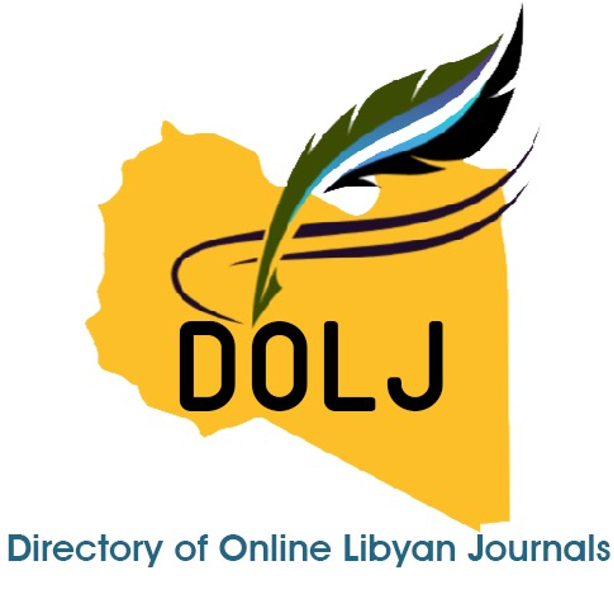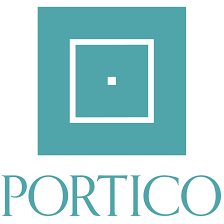Study the Adsorption of Congo Rad Dye from its Aqueous Solution on Surfaces Prepared from Peanut Shells
DOI:
https://doi.org/10.36602/jsba.2025.20.40Keywords:
Adsorption, Congo red dye, Peanut Shells, isotherm, kinetics, thermodynamicsAbstract
This study investigated the adsorption of Congo red dye from aqueous solutions using peanut shells in both raw and biochar forms as adsorbents. Dye concentration was quantified before and after adsorption using UV-Vis spectrophotometry. Key operational parameters influencing adsorption efficiency were systematically evaluated, including contact time, adsorbent dosage, initial dye concentration, temperature, and solution pH. The adsorption kinetics revealed rapid equilibrium attainment within ≤10 min for biochar adsorbent. Interestingly, adsorption capacity (Qₑ) exhibited an inverse relationship with adsorbent dosage (0.1–2 g), while dye removal efficiency increased proportionally with dosage. A positive correlation was observed between initial dye concentration and Qₑ values. The equilibrium data best fitted the Freundlich isotherm model (R² > 0.95), with the isotherm profile exhibiting a Type S classification according to Giles' system. Thermodynamic analysis confirmed the spontaneity of the process (negative ΔG° values) and revealed distinct thermal behaviors: exothermic adsorption on raw shells (negative ΔH°) versus endothermic adsorption on biochar (positive ΔH°). pH studies demonstrated optimal Congo red removal at neutral-to-weakly acidic conditions (pH ≈ 7) for raw shells, with enhanced efficiency up to pH 9.5. Conversely, biochar showed reduced adsorption capacity across the alkaline range (pH 5–11). Kinetic modeling established that the adsorption mechanism follows pseudo-second-order behavior, suggesting chemisorption characteristics. These findings demonstrate that peanut shell-derived adsorbents offer cost-effective solutions for azo dye removal, with performance tunable through material pretreatment and process optimization.
References
1. Hamadi, A. A., Uraz, G., Ö, H.K.a, & Osmanağaoğlu. (2017). Adsorption of Azo Dyes from Textile Wastewater by Spirulina Platensis. Eurasian Journal of Environmental Research, 1, 19–27.
2. Elsherif, K. M., El-Hashani, A., El-Dali, A., Musa, M. (2014), Ion Selectivity Across Parchment-Supported Silver Chloride Membrane in Contact with Multi-valent Electrolytes. International Journal of Analytical and Bioanalytical Chemistry, 4 (2), 58-62
3. الخراز ع. م.، عامر أ. م. & أبوشيبة ر. ع.، (2017) ، دراسة امتزاز صبغتي المثيل البرتقالي والبلورة البنفسجية على سطح قشور الفول السوداني،المؤتمر السنوي الأول حول نظريات وتطبيقات العلوم الأساسية والحيوية. 280-292
4. Elsherif, K. M., Yaghi, M. M. (2017). Studies with Model Membrane: The Effect of Temperature on Membrane Potential. Moroccan Journal of Chemistry, 5(1), 131-138.
5. Shu, J., Wang, Z., Huang, Y., Huang, N., Ren, C., & Zhang, W. (2015). Adsorption removal of Congo red from aqueous solution by polyhedral Cu2O nanoparticles: kinetics, isotherms, thermodynamics and mechanism analysis. Journal of Alloys and Compounds, 633, 338–346.
6. Alkherraz, A. M., Elsherif, K. M., Madiry, A. H., Sasi, M. S. (2024). Evaluating the efficiency of red tea leaves residues in adsorption of methylene blue dye from liquid wastes: isotherms, kinetics, and thermodynamics studies. Arabian Journal of Scientific Research, 5 (1), 1-9 .
7. Chen, Y., Lin, Y.-C., Ho, S.-H., Zhou, Y. & Ren, N.-q. (2018 .(Highly efficient adsorption of dyes by biochar derived from pigments-extracted macroalgae pyrolyzed at different temperature.
8. De Castro M. L., Abad, M. L.B., Sumalinog, D. A. G., Abarca, R. R. M., Paoprasert, P. & de Luna, M. D. G. (2018( Adsorption of methylene blue dye and Cu (II) ions on EDTA-modified bentonite: isotherm, kinetic and thermodynamic studies. Sustainable Environment Research.
9. Elsherif, K. M., El-Hashani., A., El-Dali, A. (2013). Effect of temperature on membrane potential and evaluation of thermodynamic parameters of parchment supported silver thiosulphate. Der Chemica Sinica, 4 (6), 13-21.
10. Elsherif, K. M., El-Hashani, A., El-Dali, A., El-kailany, R.. (2014). Bi-ionic Potential Studies for Silver Thiosulphate Parchment-Supported membrane. International Journal of Advanced Scientific and Technical Research, 1(4), 638-646.
11. Zhang, Y., B. Wu, H. Xu, H. Liu, M. Wang, Y. He, and B. Pan, Nanomaterials-enabled water and wastewater treatment. NanoImpact, 2016. 3: p. 22-39.
12. Abajja S. A., Alhalib A. M., Swaiyeb K. A., Altakrouni H. J., Shkabe S. A., Alkherraz A. M. & Elsherif K. M., (2024), Utilization of Dry Erucaria Plant Residues As A Novel Adsorbent For Methylene Blue Dye: Experimental Investigation And Modeling, Journal of Basic Sciences (JBS), 37.(1), 78- 97.
13. Schaffner, L.; Brugger. S.; Nyffenegger, R.; Walter.; (2006), Surfactant mediated adsorption of negatively charged latex particles to a cellulose surface. Colloides and surfaces A : physichem Eng, Aspects, 286, 39-50
14. Wang , Y.; Yu- Gao, B; Wen Yue ,W. & Yan Yueg , Q ., (2007), Adsorption kinetics of nitrate from aqueous solutions onto Modified wheat residue colloids and surfaces A : physicochem. Eng, Aspects, 308, 1-5.
15. Abdelrahman, B.; Fadhil, M. & Deyab, M.; (2007), Conversion of some fruit stones and shells into activated carbons, The Arabian Journal for science and Engineering, 33, 175 – 184.
16. Alshabanat, M.; Alsenani, G. & Almufarij, R., (2013), Removal of Crystal Violet Dye from Aqueous Solutions onto Date Palm Fiber by Adsorption Technique, Journal of Chemistry, 2013, 1- 6.
17. Elsherif K. M., Alkherraz A. M., Edwards H., Mutawia B. Y., (2024), Congo red dye adsorption on dry green pea husk: Effects of process parameters and modeling approaches, Environmental Health Engineering and Management Journal, 11(3), 273-284.
18. Fierro, V., Torné-Fernández, V., & Celzard, A. (2006). Kraft lignin as a precursor for microporous activated carbons prepared by impregnation with ortho-phosphoric acid: synthesis and textural characterisation. Microporous and Mesoporous Materials, 92, 243–250.
19. Singh, C. K., Sahu, J. N.,Mahalik, K. K.,Mohanty, C. R.,Mohan, B. R., & Meikap, B. C. (2008). Studies on the removal of Pb (II) from wastewater by activated carbon developed from, Tamarind wood activated with sulphuric acid. Journal of Hazardous Materials, 153, 221–228.
20. Lopes, A. S.d. C., Carvalho, S. M. L.o.d., Brasil, D.d. S. B., Mendes, R.d. A., & Lima, M. O. (2015). Surface modification of commercial activated carbon (CAG) for the adsorption of benzene and toluene. American Journal of Analytical Chemistry, 528–538.
21. Vu, T. M., Trinh, V. T., Doan, D. P., Van, H. T., Nguyen, T. V., Vigneswaran, S., & Ngo, H. H. (2017). Removing ammonium from water using modified corncob-biochar. Science of the Total Environment, 579, 612–619.
22. Alam M. S., Khanom R. & Rahman M. A., (2015) Removal of Congo red Dye from Industrial Wastewater by Untreated Sawdust, American Journal of Environmental Protection; 4(5): 207-213.
23. Raman C. & Kanmani D., (2018) “Decolorization Of Mono Azo Dye And Textile Wastewater Using Nano Iron Particles”,. Environmental Progress & Sustainable Energy . Vol. 38 ,Issue S1.
24. Chen J., Wei D., Liu L., Nai J., Liu Y., Xiong Y., Peng J., Mahmud S. & Liu H., (2021), Green Synthesis of Konjac Glucomannan Templated Palladium Nanoparticles for Catalytic Reduction of Azo Compounds and Hexavalent Chromium. Materials Chemistry and Physics, 267, 124651.
25. Sayğılı, G. A., (2015), Synthesis, Characterization and Adsorption Properties Of A Novel Biomagnetic Composite For The Removal Of Congo Red From Aqueous Medium. Journal Of Molecular Liquids, 211: P. 515-526.
26. Elsherif K. M., El-Hashani A. & Haider I., (2018), Equilibrium and Kinetic Studies of Cu (II) Biosorption Onto Waste Tea and Coffee Powder (WTCP), Iranian Journal of Analytical Chemistry, 5 (2), 31-38.
27. Alkherraz, A. M., Ali, A. K. & Elsherif, K. M. (2020). Equilibrium and thermodynamic studies of Pb(II), Zn(II), Cu(II) and Cd(II) adsorption onto mesembryanthemum activated carbon. Journal of Medicinal and Chemical Sciences, 3(1), 1-10.
28. Alkherraz, A. M., Ali, A. K., El-Dali, A. & Elsherif, K. M. (2019). Biosorption Study of Zn(II), Cu(II), Pb(II) and Cd(II) Ions by Palm Leaves Activated Carbon. To Chemistry Journal, 4, 8-17.
29. Igwegbe, C. A., Banach, A. M. & Ahmadi, S. (2018). Adsorption of Reactive Blue19 from Aqueous Environment on Magnesiumoxide Nanoparticles: Kinetic, Isotherm and Thermodynamic Studies. The Pharmaceutical and Chemical Journal, 5(5), 111-121.
30. Elsherif K. M., El-Hashani A. & Haider I., (2019), Biosorption of Co (II) ions from aqueous solution onto coffee and tea powder: Equilibrium and kinetic studies, Journal of Fundamental and Applied Sciences, 11 (1), 65-81.
31. Elsherif, K. M., El-Dali, A., Alkarewi, A. A., Ewlad-Ahmed, A. M., Treban, A. (2021). Adsorption of crystal violet dye onto olive leaves powder: Equilibrium and kinetic studies. Chemistry International, 7 (2), 79-89.
32. Elsherif, K.M., El-Hashani, A., Haider, I. (2018). Biosorption of Fe (III) onto coffee and tea powder: Equilibrium and kinetic study. Asian Journal of Green Chemistry, 2 (4), 380-394.
33. Alkherraz, A. M., Ali, A. K., & Elsherif, K. M. (2020). Removal of Pb(II), Zn(II), Cu(II) and Cd(II) from aqueous solutions by adsorption onto olive branches activated carbon: Equilibrium and thermodynamic studies. Chemistry International, 6(1), 11-20.
34. Alkherraz, A. M., Elsherif, K. M., Blayblo, N. A. (2023). Safranin adsorption onto Acasia plant derived activated carbon: Isotherms, thermodynamics and kinetic studies. Chemistry International, 9(4), 134-145.
35. Elsherif, K. M., Ewlad-Ahmed, A. M., Treban, A. (2017). Removal of Fe (III), Cu (II), and Co (II) from Aqueous Solutions by Orange Peels Powder: Equilibrium Study. World Journal of Biochemistry and Molecular Biology, 2 (6), 46-51.
36. Elsherif, K. M., El-Dali, A., Ewlad-Ahmed, A. M., Treban, A. A., Alqadhi, H., Alkarewi, S. (2022). Kinetics and Isotherms Studies of Safranin Adsorption onto Two Surfaces Prepared from Orange Peels. Moroccan Journal of Chemistry, 10 (4), 639-651.
37. Elsherif, K. M., Ewlad-Ahmed, A. M., Treban, A. (2017). Biosorption Studies of Fe (III), Cu (II), and Co (II) from Aqueous Solutions by Olive Leaves Powder. Applied Journal of Environmental Engineering Science, 3 (4), 341-352.
38. Elsherif, K. M., Alkherraz, A. M., Madri, A. H., Eldali, A., Yaghi, M. M. (2024). Kinetic, Isotherm, and Thermodynamic Modeling of Methylene Blue Adsorption by Hibiscus Plant Waste Derived Biosorbents. Journal of Chemical Health Risks, 4 (4), 727.
39. Farhan, A.M., Salem, N.M., Ahmad, A.L., Awwad, A.M., 2012. Kinetic, equilibrium and thermodynamic studies of the biosorption of heay metals by Ceratonia Siliqua Bark, American Journal of Analytical Chemistry 2(6), 335-342.















